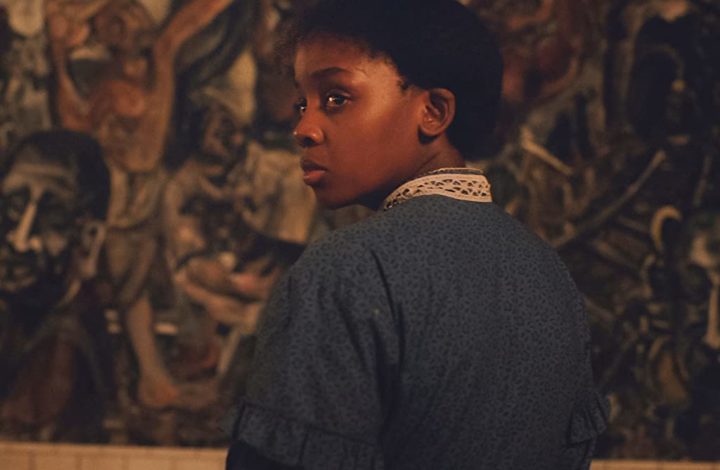
MPAA Rating: NR | Rating: ★★★★★
Release year: 2021
Genre: Drama, Fantasy, History Director: Barry Jenkins
I’m writing this review on June 19, 2021, mere days after Juneteenth was made an official federal holiday in the United States commemorating the emancipation of African American slaves following the US Civil War. It seems an appropriate date to write my reflections on Oscar-winning filmmaker Barry Jenkins’ adaptation of Colson Whitehead’s novel, The Underground Railroad, following Jenkins’ Moonlight and If Beale Street Could Talk. It took me weeks to complete my viewing, as each powerful chapter was so moving that I needed to take the series in slowly, leaving space for careful consideration and the emotions it stirred within me. Whatever Jenkins’ The Underground Railroad is—an epic TV miniseries, an affecting episodic film, an audiovisual symphony—it is a masterpiece of cinematic art and necessary viewing for American audiences. Within the first ten minutes of the first episode, I was keenly aware that I was experiencing what will likely be considered the best film/show/cinema of the year. Equal parts enchanting and harrowing, The Underground Railroad is a dynamic work of wonders.
In a fusion of historical drama and romantic realism, the mythic tale unfolds over ten chapters mainly centered on Cora (Thuso Mbedu), a runaway slave from Georgia who travels the eponymous railroad on her quest for freedom. She is pursued by Ridgeway (Joel Edgerton), a relentless slave catcher who has never failed to catch the runaways he’s pursued apart from Mabel (Sheila Atim), Cora’s mother. Where the historical “underground railroad” was a network of abolitionists and safe houses which provided shelter for African-American seeking liberation from the evils of slavery, here the railroad is presented as an actual subterranean railway system, with stations, conductors, and massive steam locomotives traversing the continent through enormous human-made caves and tunnels. By presenting the history of American slavery through magical realism and historical fiction, The Underground Railroad both affirms the concrete personal testimonies of Black Americans and elevates those testimonies to the level of cultural myth. Indeed, the practice of sharing one’s testimony is a key facet to the narrative—these stories must be told, must be remembered, must be believed.
Every single element of The Underground Railroad is extraordinary; every individual part works together to create a beautiful whole. The performances are all exceptional, particularly Mbedu and Edgerton as the two leads, but also Chase W. Dillon as Homer, Ridgeway’s assistant; the 11-year-old actor infuses his character with a kind of timelessness, an unsettling adult-like charisma. Aaron Pierre and William Jackson Harper are standouts as well, portraying Cora’s two main love interests over the course of her tumultuous journey. The performances are enhanced by the lush quasi-mystical cinematography from James Laxton and the powerfully affecting score from Nicholas Britell. Indeed, I could go on to praise the art and production design, the lighting, the costumes, the makeup, the editing, etc. Everything in The Underground Railroad not only works, but is exemplary.
Moreover, The Underground Railroad is a religious work of art; it wears its spirituality on its sleeve. This is evident from “Chapter 1: Georgia,” where the Georgia plantation owner quotes Biblical passages to the slaves about obeying masters as he forces them to watch the horrific torture and execution of a runaway slave, all the way to “Chapter 10: Mabel,” where the bite of a serpent leaves a young Cora an orphan. “Chapter 3: North Carolina” finds Cora forced into hiding when she ends up at in a cultish village that violently eliminates any semblance of religious impurity, whether “Black” or “white.” “Chapter 4: The Great Spirit” centers on Ridgeway’s upbringing under his kindly blacksmith father (Peter Mullan) who holds a semi-pantheistic view. He sees “the Great Spirit” as being within all things and persons, a spiritual perspective which the young Ridgeway (Fred Hechinger) cannot seem to see for himself, rejecting it for his own religious ideology: the American Imperative, a manifest destiny built on white supremacy, violence, and greed. I would recommend watching The Underground Railroad in conjunction with reading the theological works of Willie Jennings, Kelly Brown Douglas, J. Kameron Carter, and M. Shawn Copeland.
Yet the spirituality/theology of The Underground Railroad is not only in its overt story elements, but also in its aesthetics. The hovering ever-moving camera of Laxton/Jenkins connotes a pneumatological viewpoint not unlike the films of Tarkovsky, Malick, or Zhao—through the cinematic apparatus, we are made privy to the viewpoint of the Great Spirit. Lengthy shots of characters looking directly into the camera while lit by the golden hue of natural sunlight are striking. As we meet the gaze of these beautiful Black individuals, we are confronted with the Great Spirit—the image of God—which each of them carries. This is a cinematography of both love and justice, a cinematic representation of El Roi, The God Who Sees (cf. Genesis 16:13). This also reminds me of philosopher Emmanuel Levinas and his understanding of the face of the human Other as being the very face of God. While Levinas would likely be unconvinced that this transcendent face-to-face encounter could be generated by a television series, I think The Underground Railroad would challenge such prejudices. Indeed, this miniseries suggests that television need not always be considered as somehow “beneath” film or merely “popular” or “low” art. What Jenkins and Co. have accomplished is, in my view, the very highest of cinematic art.
IMDB Listing: https://www.imdb.com/title/tt6704972/